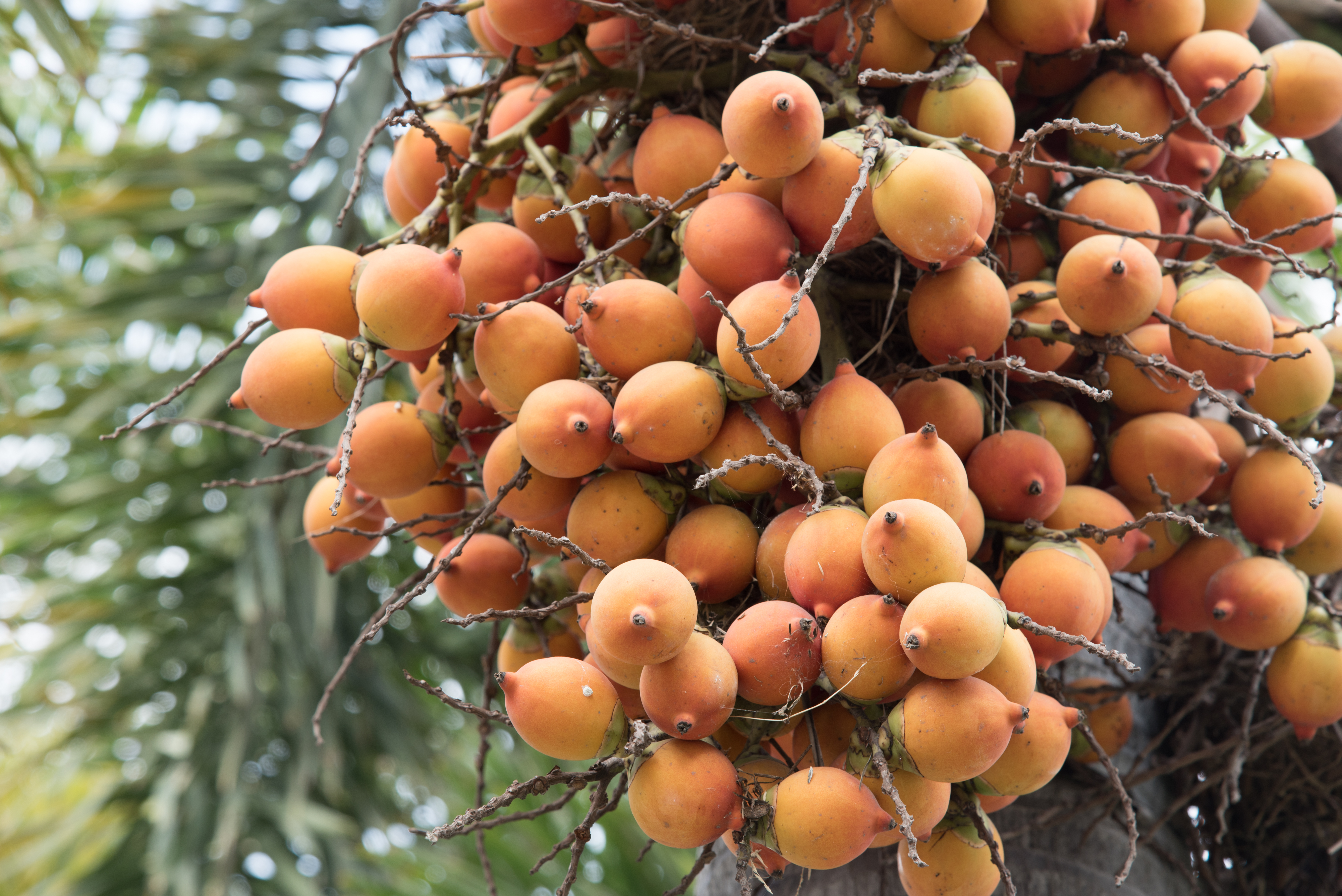Peach palm
(Bactris gasipaes)

Description
Bactris gasipaes is a species of palm native to the tropical forests of Central and South America. It is well spread in these regions, where it is often cultivated by smallholders in agroforestry systems or more rarely, in monoculture. Common names include peach palm in English, pijiguao or chontaduro in Spanish and pupunha in Portuguese. It is a long-lived perennial plant that is productive for 50 to 75 years on average. Its population has an important genetic diversity, leading to numerous fruits, colors, and qualities. The fruits are edible and nutritious but need to be cooked for 30 minutes to five hours. They also benefit many animals in the wild. Peach-palms are also cultivated for the heart of palm, and the trunk can make valuable timber. Bactris gasipaes, like most sea-island palms, grows erect, with a single slender stem or, more often, several stems that are up to eight inches (20 cm) thick, in a cluster; generally armed with stiff, black spines in circular rows from the base to the summit. There are occasional specimens with only a few spines. It can typically grow to 20 metres (66 ft) or taller. The leaves are pinnate, 3 metres (9.8 ft) long on a 1 metre (3.3 ft) long petiole. The fruit is a drupe with edible pulp surrounding the single seed, 4–6 cm long and 3–5 cm broad. The rind (epicarp) of the fruit can be red, yellow, or orange when the fruit is ripe, depending on the variety of the palm. The peach palm grows wild in well-drained soils with various physical and chemical conditions, including acid and poor soils, since it is assisted by its association with mycorrhizas. It is grown in climates with precipitations between 2 000 mm and 5 000 mm and annual mean temperatures exceeding 24 °C. The recommended altitude for commercial cultivation ranges from 0 to 900 m asl. Peach palm is occasionally found at higher altitudes of up to 1800m asl, as the case in Colombia's Cauca region El Tambo. Peach palm can be considered the most important domesticated palm species of the Neotropics. Its wild and domesticated populations can be found in Central America, in the pacific lowlands of Colombia and Ecuador, in Venezuela and in the area of the Amazon rainforest, especially at the eastern foothills of the Andes. The exact origin of the cultivated peach palm remains open to debate The widespread cultivation of peach palm in the Americas reflects its capacity to adapt to a wide range of ecological conditions in the Tropics and Subtropics.
Taxonomic tree:







